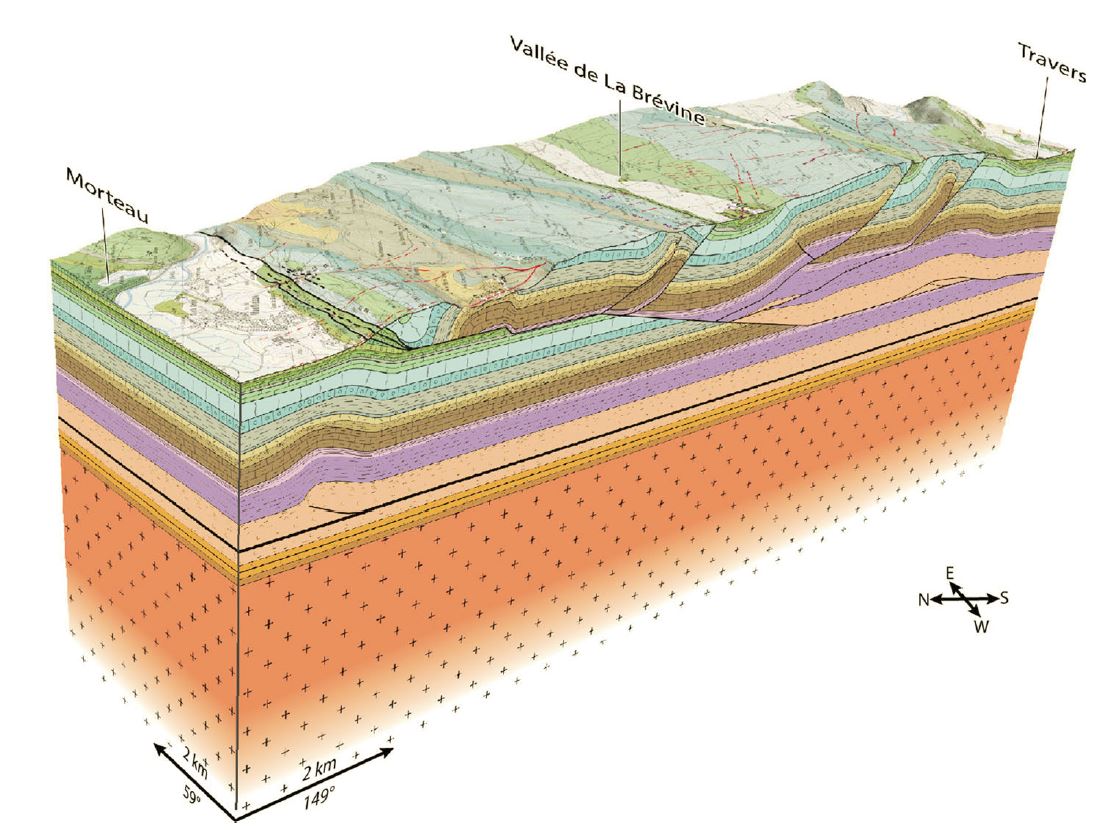The Master work of Valentin Rime has been published together with coauthors Anna Sommaruga, Marc Schori, and Jon Mosar in the Swiss Journal of Geosciences. The detailed field investigation in the Neuchâtel Jura was combined with kinematic forward modelling to propose a new, innovative solution to the development of the High Range of the Jura. The proposed model implies secondary detachments in the Opalinus Clay and the Cretaceous layers leading to repetitions in the Mesozoic cover rocks over large distances. This in turn explains the high topographic position of exposed sediments. The proposed solution is an alternative to models showing overthickening of Triassic evaporites associated with a single detachment level. Along the investigated profile, the Jura Mountains accommodate a shortening of 8.5 km. The kinematic forward model suggests an oscillating sequence of thrusting, rather than a simple, in sequence, forward propagation succession of thrusts.

ref. Tectonics of the Neuchâtel Jura Mountains: insights from mapping
and forward modelling Swiss Journal of Geosciences
doi.org/10.1007/s00015-019-00349-y